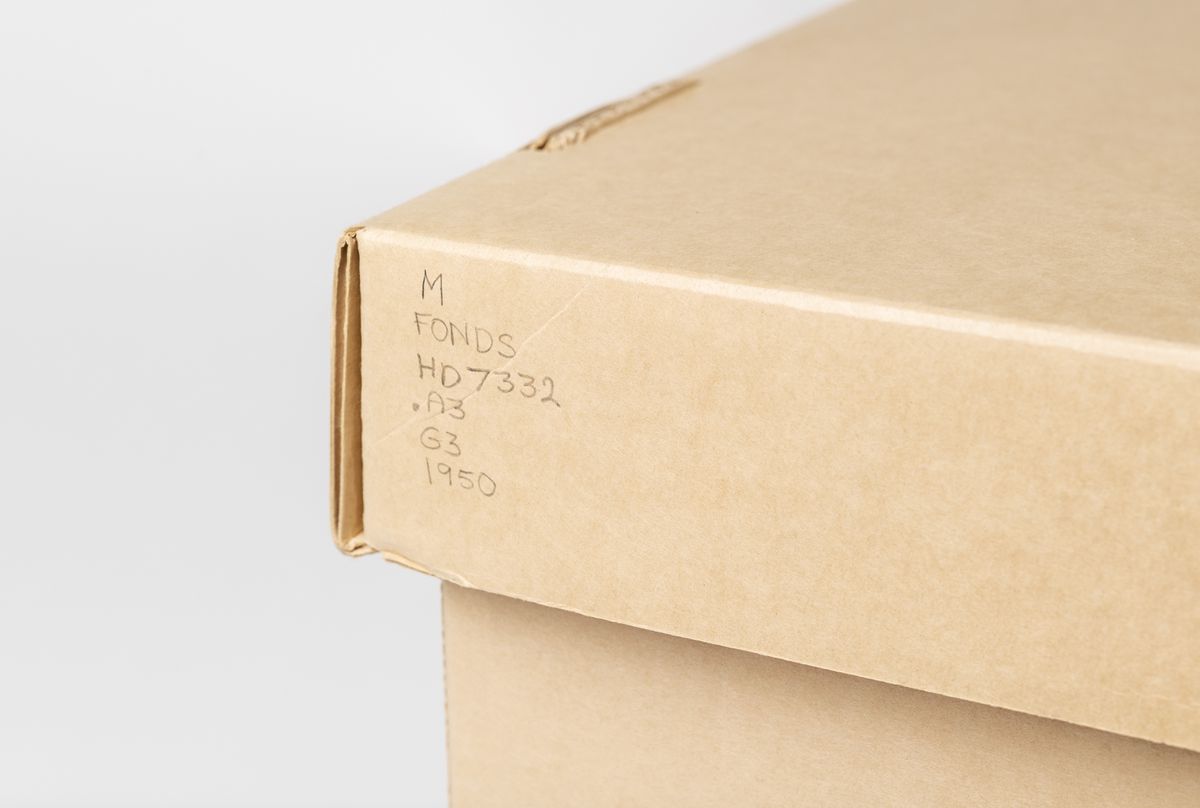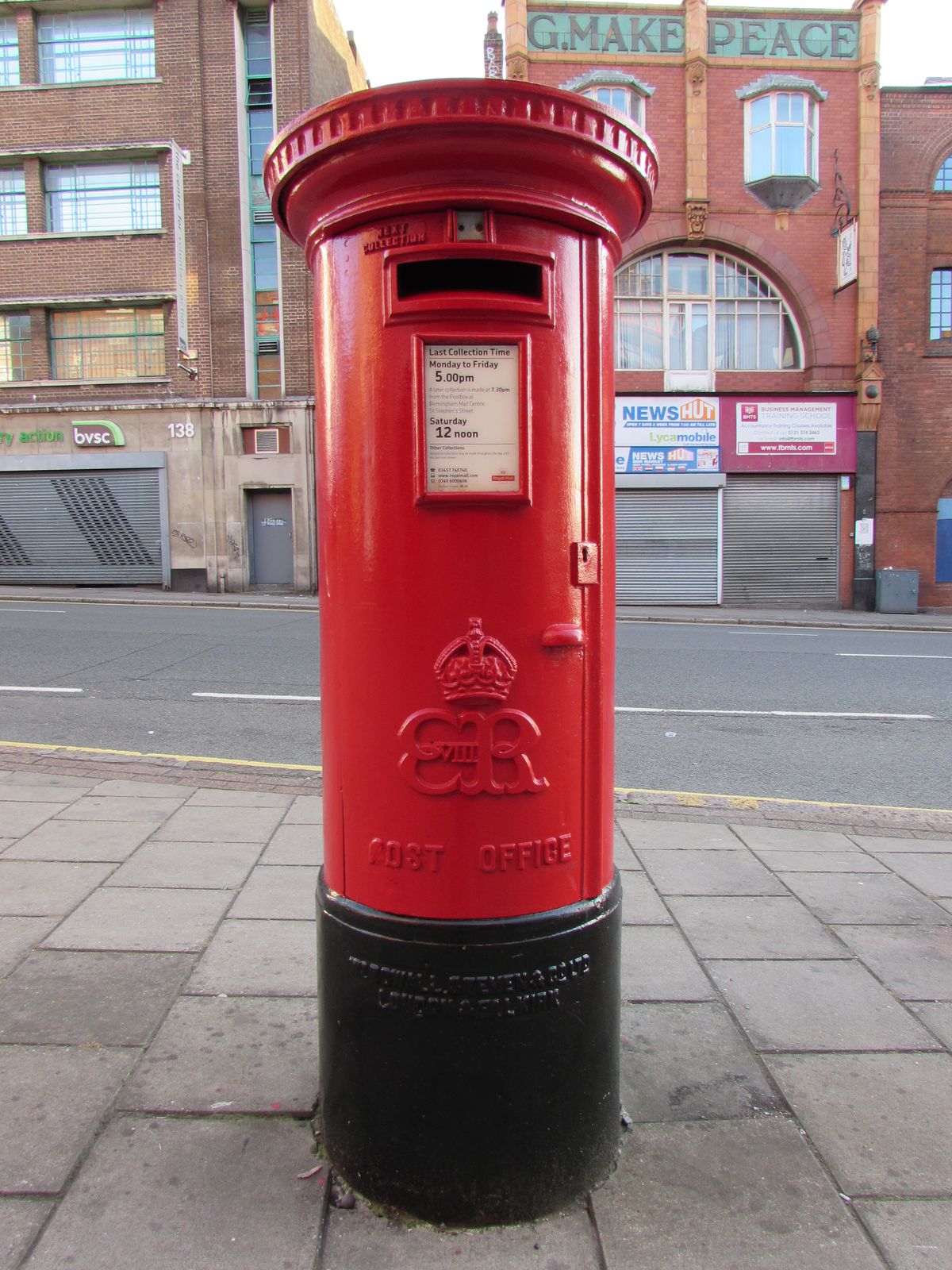In the Scale of... a reference number, a cabinet, a postbox
Savia Palate, Gerlinde Verhaeghe, and Ensar Temizel
This is the first installment of “In the Scale of…,” a series of counterproposals to conventional constructs of scale, authored by the participants of our 2020 Toolkit for Today and introduced by Émélie Desrochers-Turgeon and Eliyahu Keller in this article. In the following texts, Savia Palate considers an archive reference number, Gerlinde Verhaeghe studies a display cabinet, and Ensar Temizel analyzes a proposal for postboxes of the future. Each author takes a device for containment and communication as a point into which spatial, temporal, and cultural distances are collapsed.
In the Scale of a Reference Number
Savia Palate
There are two acts in this text. The first is the act of collection that created the artefact under study, a filing box housed in the vaults of the CCA library. The second is an act of translation: one of many—infinite and indefinite if the box is properly preserved—that occur whenever the box reopens. To enable both acts, the box has a reference number: HD7332.A3 G3 1950. This series of characters signifies the place where the box is physically located within a larger space and, at the same time, the box’s relations within a broader system of cataloguing. This reference number, which has its own logic and scientific reasoning, suggests the elimination of human subjectivity, despite that processes of cataloguing, filing, and archiving are inevitably instrumental and entangled with socio-political endeavours.1 Nevertheless, a conflation of scales occurs between archival space, the box, and the knowledge contained therein, one that the reference number makes manageable—an instance of a human construct that necessitates that the world be manageable.
HD7332.A3 G3 1950 contains more than one-hundred booklets, offprints, pamphlets, official reports, and legislative documents from England, Scotland, France, Germany, Italy, Sweden, and The Netherlands. The collector of these documents, the architect Jean Gareau, gathered them as precedents for his report “L’habitat collectif en Europe occidentale,” which would be published in 1963. This was his first act. Gareau’s second act, his subsequent translation of the materials, was certainly informed by the context of why, how, and to what extent he used these documents when compiling the new report. And yet, there are bound to be different intentions and parameters at play when the box is opened by a new interlocutor. Whereas this box was filled by Gareau’s documents, I had to empty it, at least of the essence with which Gareau initially imbued it—reminding me of Jean Baudrillard’s argument that “collecting is qualitative in its essence and quantitative in its practice.”2 I barely knew who Jean Gareau was and what “L’habitat collectif en Europe occidentale” was about. Learning this was not part of my pursuit. I reread and translated the documents within the box as potential transnational influences for a different report published in Britain in 1961, “Homes for Today and Tomorrow.” However, the scales of time and space determining my and Gareau’s respective inquiries were similar: the way this manifold of documents could inform the production of a report prescribing what, in my case, was called council housing and, in Gareau’s case, collective housing in the early 1960s. Our processes of extracting, manipulating, and reflecting on these documents as found resulted in different stories. However, our processes inevitably crossed paths, demonstrating a miniature of the world’s intertwined histories through the global circulation of culture.3
The impersonal and rather singular reference of HD7332.A3 G3 1950 scales a vastness of words, ideas, and questions down to make them as manageable as a collection of various documents. And though my translation of this collection by Gareau remains traceable behind this reference number, the reconceptualization of this collection for each translation that may follow can remain obscure, if not untraceable, without a reference number and the formation of another system of cataloguing of who, when, and why decided to open that box.
-
For more on the subjectivity of archival processes, see Craig Robertson, The Filing Cabinet: A Vertical History of Information (Minneapolis and London: University of Minnesota Press, 2021); Ann Laura Stoler, Along the Archival Grain: Epistemic Anxieties and Colonial Common Sense (Princeton and Oxford: Princeton University Press, 2009). ↩
-
Jean Baudrillard, “Subjective Discourse or the Non-Functional System of Objects,” in The Object Reader, eds. Fiona Candlin and Raiford Guins (New York: Routledge, 2009), 3. ↩
-
For more on the conceptualization of the notion of translation, see Esra Akcan, Architecture in Translation: Germany, Turkey, and the Modern House (Durham and London: Duke University Press, 2012). ↩
In the Scale of a Cabinet
Gerlinde Verhaeghe
For the private individual, the place of dwelling is for the first time opposed to the place of work. The former constitutes itself as the interior. Its complement is the office. The private individual, who in his office has to deal with reality, needs the domestic interior to sustain him in his illusions. […] From this arise the phantasmagorias of the interior – which, for the private man, represents the universe. In the interior, he brings together the far away and the long ago. His living room is a box in the theater of the world.1
These well-known lines from Walter Benjamin’s essay “Louis-Philippe ou l’intérieur,” describing the nineteenth-century bourgeois interior, echoed in my mind during the Covid-19 lockdowns that confined people to their homes around the world. Inverting Benjamin’s words, “the place of dwelling” was, once again and for an undetermined period of time, conflated with the “place of work” for the “private individual.” Now virtually connected, the private room had not merely turned into “a box in the theatre of the world,” but quickly became itself a spectacle broadcast for the world to see.
The above photograph of a cabinet designed by Carlo Mollino captures the domestic theatre metaphor across scales: it shows a display cabinet as a miniature theatre in a domestic interior. The black and white image shows a theatre-cabinet placed in the living room of a collector’s home, Casa Devalle. The white wall is decorated with fragments of a frieze, an architrave, an Ionic capital, and a figurative bas-relief. The cabinet itself takes the form of a miniature of a Greek temple, complete with pediment.2 Its irregularly cut mirrored sliding doors reflect the lamp and curtains of the dining room. The cabinet thus not only embodies a historical reference to the Greek temple, but also makes reference to theatre curtains. The theatre-cabinet seems to combine display aspects of both art and theatre: photographed with its doors open, it displays small antique figurines, which appear as if on stage, alluding to the world of myths and tragedies. While the cabinet assembles miniature objects from distant spaces and times and positions them on “a stage of art,” it also forms a mirror image of its surroundings and returns the gaze of the collector.
The French term cabinet may refer to both a space for objects and the object itself. Fundamentally a place of objects, the cabinet works across scales: from piece of furniture, to interior for display, to an exhibition and representational space of its occupant-collector. In other words, from a cabinet within a room to the room as cabinet. Accordingly, Mollino’s photograph can be read as a mise en abyme of the cabinet: from piece of furniture to interior for display.
In the Scale of a Postbox
Ensar Temizel
Techno-Trees or People-Poles were large-scale structures proposed by Cedric Price and Gordon Pask in an entry to the 1986 Campus City Competition for Kawasaki, Japan. The project marked the second collaboration between the two after the well-known Fun Palace. As defined by its organizers, the competition aimed to solicit proposals for the revitalization of Kawasaki, to take it from a “long-established major industrial city” to an “information-intensive and humanistic city.”1
As Price and Pask’s explanatory text for their competition entry reveals, Techno-Trees would, depending on their height, carry as many as four “spherical pods,” within which facilities would be defined according to the location (industrial/residential). Notwithstanding this variation, each Techno-Tree would generally include “electronic data exchange facilities” at the highest level, “local environmental conditioners” at the middle, and “publicly accessible resources including the equivalent of the ‘local postman’ and bookstall” at the lowest level. Several hundred Techno-Trees would be scattered across the entire municipal area of Kawasaki, and their exact positions would be determined by user demand. The entire network was proposed as a temporary “socio-civic learning toy” intended to be “always visible-always available.”2
Price was no stranger to the idea of using large spherical elements for civic purposes. The Olympia project—a design for the pedestrian plaza at the 1972 Olympic Village in Munich—also involved a sizeable spherical element with multi-media facilities offered for public use. However, as the Techno-Trees competition posters show, the spherical pods would be able to perform on an entirely different scale: they could communicate among themselves and with other such facilities capable of information exchange. The project was based on the premise that the proposed infrastructure would allow unlimited flow and storage of information because it would be equipped with a minimum of sixty gigabytes of RAM and storage along with some fiber optic/coaxial channels and telephone lines—a generous estimate for its time. The network would act as an “invisible postman” and individual Techno-Trees as high-tech postboxes “available for random access and use.”3 On a note to Price, Pask depicts a Techno-Tree alongside what appears to be an oversized traditional postbox of the type used widely in Britain and asks, with irony, which one is the larger postbox.
While this analogy subtly implies that Techno-Trees are essentially postboxes, it clearly illustrates the physical scale difference between the traditional postbox of the British streetscape and the massive Techno-Tree of the Kawasaki project, which would be a landmark of the globally connected city. However, when considered as physical embodiments of the technologies they represent, it becomes possible to argue that the postbox and the Techno-Tree operate on a similar scale. The former is a product of technological development in rail transport that yielded increased mobility of people and goods in the nineteenth century; the latter was imagined by Price and Pask as an early symbol of the technology of, what is today known as, internet. Yet both can simply be considered individual components of larger systems that are supposed to operate at a global scale.
-
Japan Association for Planning Administration & Mainichi Newspapers, International Concept Design Competition for an Advanced Information City: Competition Brief, ca. 1986. Book, 30 x 22 cm. DR2004:0470:001, Cedric Price fonds, CCA. © CCA ↩
-
Cedric Price and Gordon Pask, Campus City Competition Registration No: 1005 Explanatory Summary Text, ca. 1986. DR2004:0427, Cedric Price fonds, CCA. © CCA ↩
-
Cedric Price and Gordon Pask, presentation panels of the Kawasaki Project, ca. 1986. DR2004:0449, Cedric Price fonds, CCA. ↩






